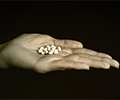Clinical articles
August 2018 Br J Cardiol 2018;25:86–7 doi :10.5837/bjc.2018.024
Artificial intelligence in cardiology: applications, benefits and challenges
Panos Constantinides, David A Fitzmaurice
| Full textAugust 2018 Br J Cardiol 2018;25:97–101 doi :10.5837/bjc.2018.025
Impact of hyperkalaemia in managing cardiorenal patients – a healthcare professional perspective
Navneet Kalsi, Sarah Birkhoelzer, Philip Kalra, Paul Kalra
| Full textJuly 2018 Br J Cardiol 2018;25:115–7 doi :10.5837/bjc.2018.018
A pulmonary triad in a patient with a giant left atrial myxoma
Andrea Calo, Madeleine Openshaw, Timothy J Bowker, Han B Xiao
| Full text
July 2018 Br J Cardiol 2018;25:107–9 doi :10.5837/bjc.2018.019
Opinions on the expanding role of CTCA in patients with stable chest pain and beyond: a UK survey
Saad Fyyaz, Alexandros Papachristidis, Jonathan Byrne, Khaled Alfakih
| Full textJuly 2018 Br J Cardiol 2018;25:110 doi :10.5837/bjc.2018.020
Comprehensive study of routine clinical use of cardiac MRI in a district general hospital setting
George Abraham, Aamir Shamsi, Yousef Daryani
| Full textJuly 2018 Br J Cardiol 2018;25:111–4 doi :10.5837/bjc.2018.021
Hypertension in pregnancy as the most influential risk factor for PPCM
Hawani Sasmaya Prameswari, Triwedya Indra Dewi, Melawati Hasan, Erwan Martanto, Toni M Aprami
| Full textJuly 2018 Br J Cardiol 2018;25:118–20 doi :10.5837/bjc.2018.022
A transitory right bundle branch block
Cristina Aguilera Agudo, Silvia Vilches Soria, Jorge Enrique Toquero Ramos
| Full text
June 2018 Br J Cardiol 2018;25:73–6 doi :10.5837/bjc.2018.016
Prescribing glucose-lowering drugs for patients with cardiac disease
Miles Fisher, Emma Johns, Gerry McKay
| Full textJune 2018 Br J Cardiol 2018;25:77–80 doi :10.5837/bjc.2018.017
‘Normal’ blood pressure: too good to be true? Case series on postural syncope and the ‘white-coat’ effect
Haqeel A Jamil, Noman Ali, Mohammad Waleed, Yvonne Blackburn, Caroline Moyles, Christopher Morley
| Full textMay 2018 Br J Cardiol 2018;25:63–8 doi :10.5837/bjc.2018.014
3D echocardiography: benefits and steps to wider implementation
Kevin Cheng, Mark J Monaghan, Antoinette Kenny, Bushra Rana, Rick Steeds, Claire Mackay, DeWet van der Westhuizen
| Full text
